Blue Tits are a well-liked bird found primarily in Europe and the United Kingdom. Known for their yellow and blue plumage and diminutive size, the species also has a charming bird call. Read on to find out more information on their nesting habits.
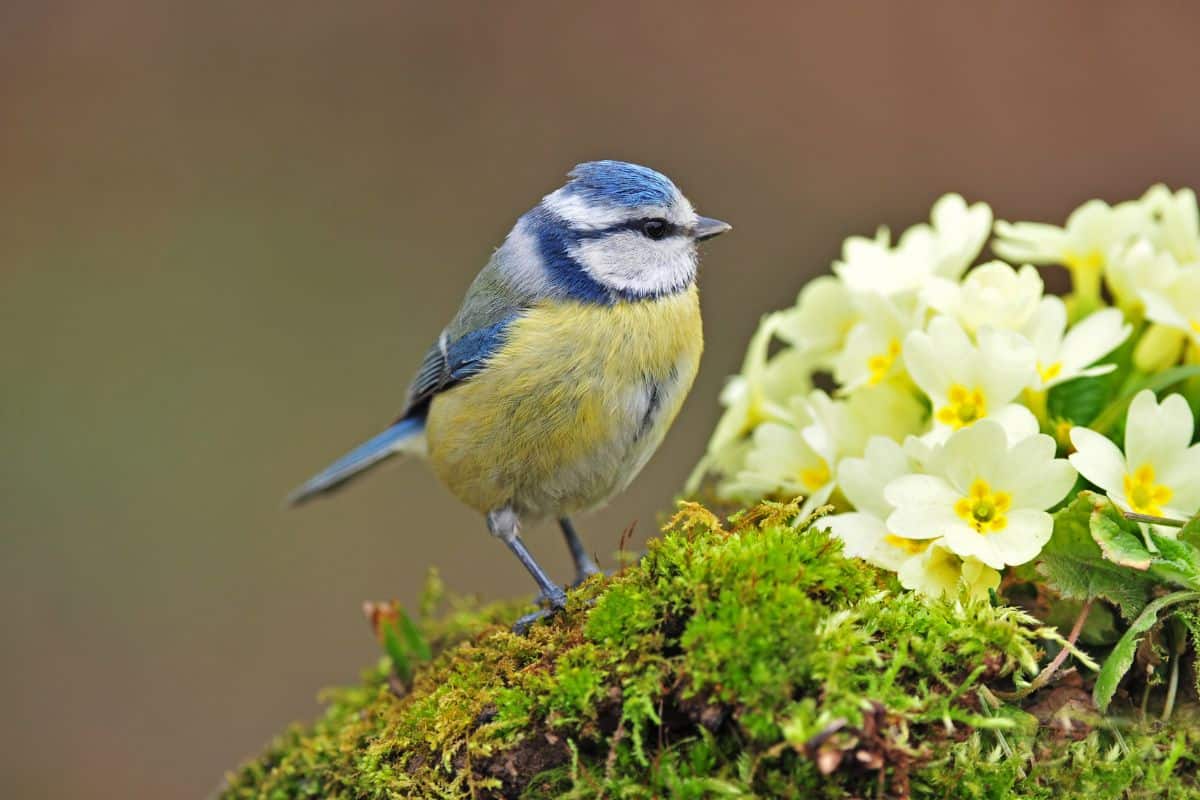
Contents
Where Do Blue Tits Nest?
Blue Tits almost always nest in crevices and holes. Crevices and holes may refer to a birdhouse, a hollow in a tree, a cracked wall, or a rocky surface.
Blue Tits are small birds, so they are especially vulnerable to attack. Larger songbirds like Jays sometimes eat fledglings if left alone, and adult Blue Tits are vulnerable to sparrowhawks, weasels, and squirrels.
Because of their vulnerability to predators, safety is a top concern for Blue Tits choosing where to build their nests. They usually select spots one to five meters off the ground, allowing them the best possible protection from ground and sky predators.
Blue Tits are attracted to birdhouses and nesting boxes, which are usually enclosed enough to provide protection and are situated at their ideal height.
Identifying a Blue Tit Nest
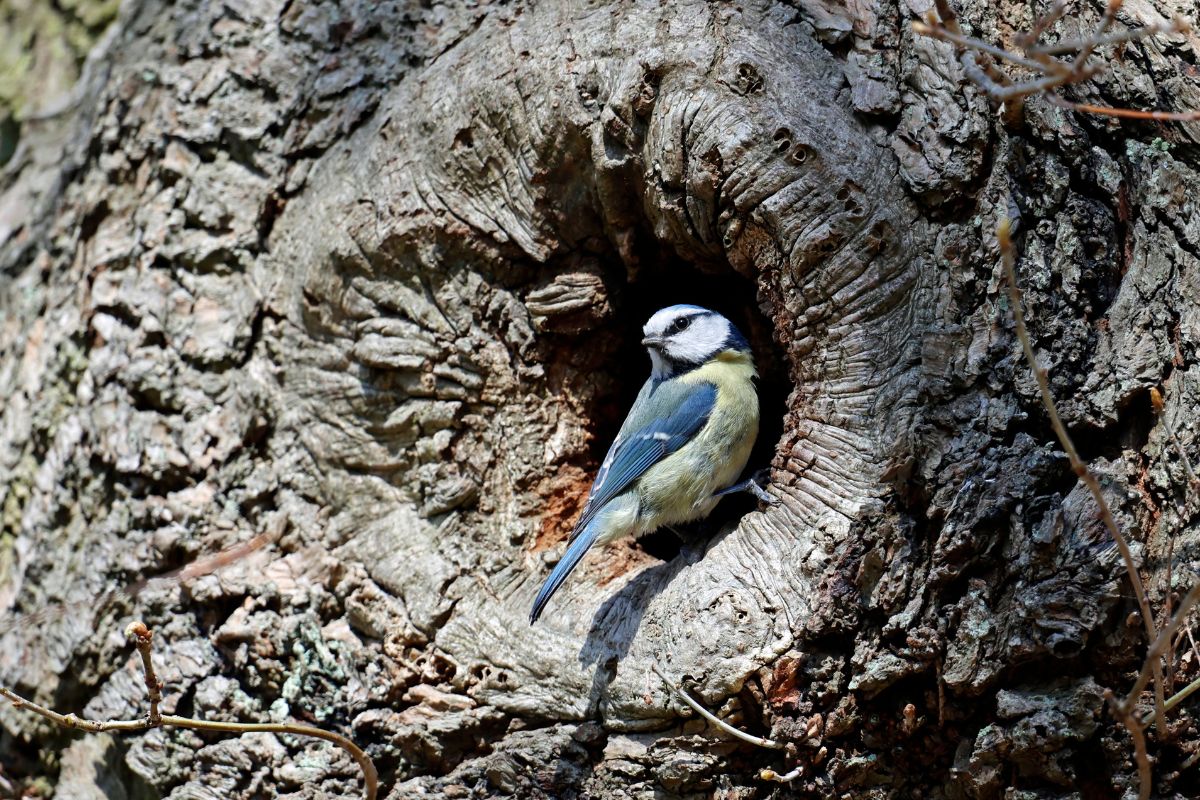
Identifying a Blue Tit nest is difficult because they get hidden in crevices. However, this does not mean that you won’t be able to spot a nest. You can monitor likely nest areas, such as tree hollows or birdhouses, to see if Blue Tits are coming and going.
If you are lucky, you may also spot a Blue Tit inside a crevice or birdhouse, which is a surefire way to know a nest inside.
Blue Tit Nest Building
Typically, the female Blue TIt in a mating pair will build the nest. Her male will follow and protect her as she gathers supplies. That is for her safety and to ensure that no other males mate with her.
Blue tits usually build their nests in two layers. The outer layer usually consists of moss or other insulating plants. They will then line that nest with softer materials to prepare for their future chicks. Softer materials include feathers, fur, or wool found on the ground.
Blue tits also sometimes use less conventional materials, such as spider webs, hair, and garbage.
Blue Tit Nesting Timeline
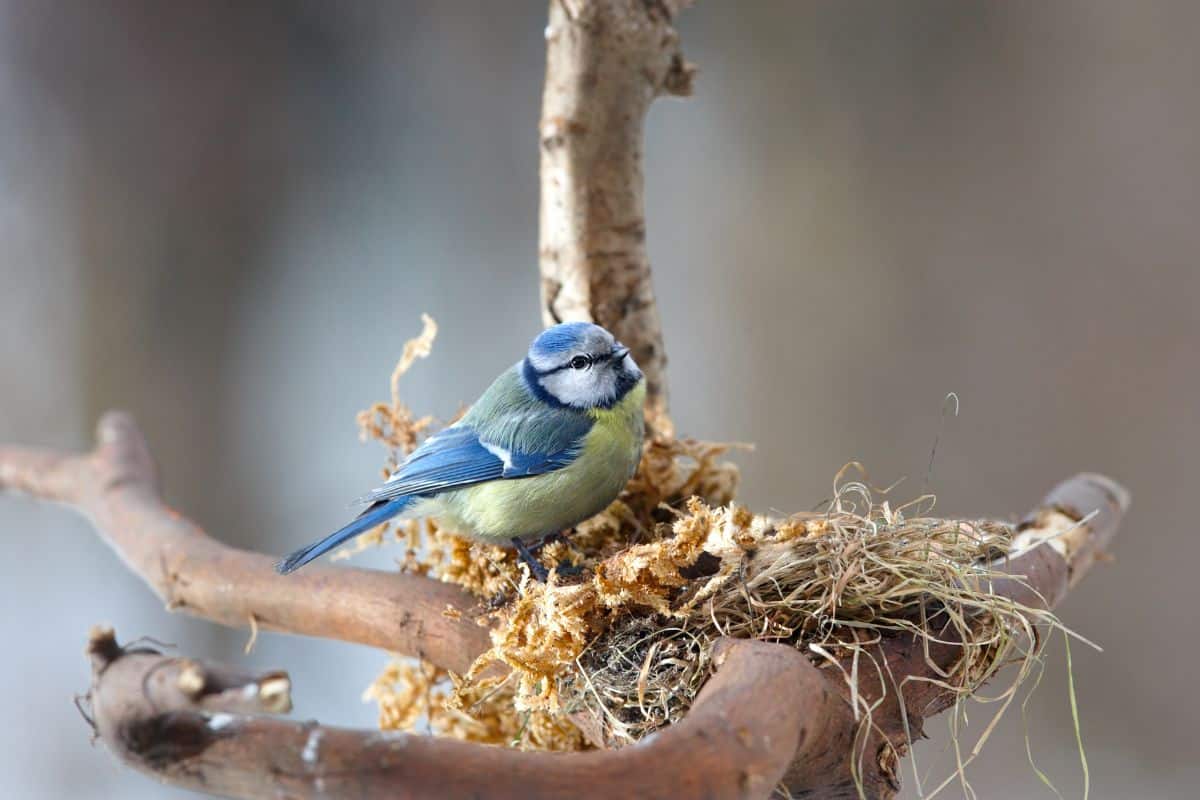
The treacherous fall and winter seasons are dangerous, and only 40-45% of Blue Tits will survive and return to their favored breeding grounds to reproduce. If they do manage to return, the long process of building a nest and laying eggs will begin in February.
It takes many months for Blue Tits to choose an area for their nests, lay their eggs, and raise their chicks. Each step gets done carefully to protect the eggs and chicks. Here is a rough timeline of the process of Blue Tit nesting.
February
Blue Tits begin looking for a safe place to build their nests in February. They look for unoccupied crevices or birdhouses that are at their preferred heights.
At the same time, they begin to look for a partner unless they have mated before. Blue tits mate for life and return to the same partner each breeding season if possible.
March
By March, Blue Tits will have found their partner and will begin preparing the location where they will build their nests. They will begin to fill their hole or crevice with seeds and other snacks so that the female can eat as she can lay her eggs.
April
In April, the female Blue Tit will begin to build the actual nest. The female often gets guarded by her male partner, but she will otherwise receive little help.
May
In early May, the female Blue Tit will lay her clutch of eggs. She will lay one egg per day until she reaches nine eggs. If the eggs survive, the female Blue Tit will begin to incubate her eggs.
Like many species of bird, Blue Tits create a brood patch when it is time to sit on the eggs. A brood patch is an area on a female bird where she plucks out her feathers, exposing the skin below. This area allows her to provide extra warmth to her eggs.
If the eggs do not survive or get predated by other animals (bird eggs are a favorite snack of snakes, squirrels, and other birds), a mating pair of Blue Tits may try another clutch in the same season.
While the female sits on her eggs, her mate will often bring her additional food. This supply of extra nutrients allows her to spend additional time on her nest, which keeps the eggs warmer. Warmer nests increase the probability of chick survival.
By late May, the eggs will (or will not) have hatched. The baby chicks are especially vulnerable at this time. They cannot fly or see and are incapable of getting their own food. They are entirely reliant on their parents for survival.
Raising the Chicks
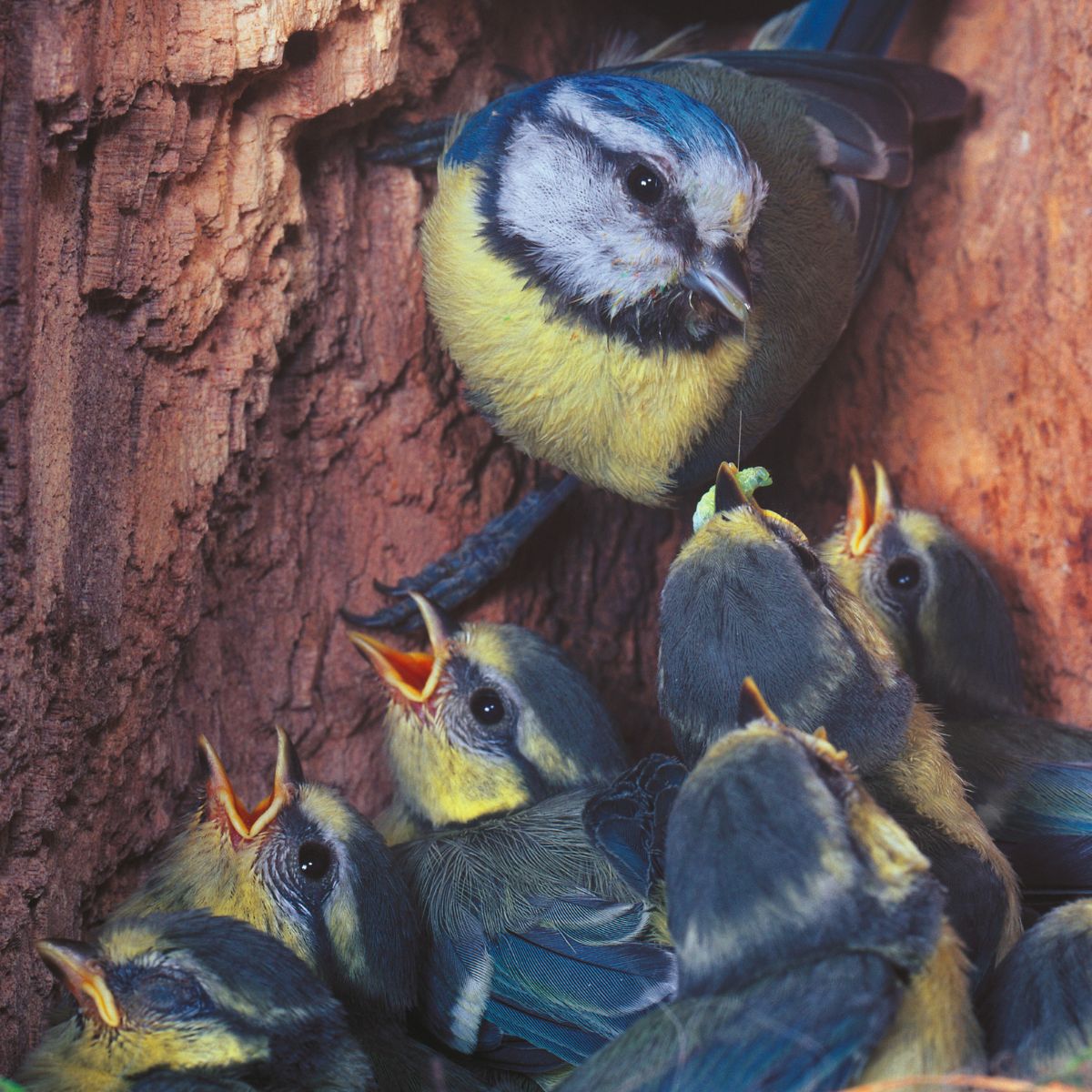
Female Blue Tits have large clutches compared to many birds. A female Blue Tit will usually lay around nine eggs. If the eggs hatch, the chicks will spend roughly three weeks in the nest.
Throughout the three weeks, the parents will bring the young chicks food. Typically, Blue Tit chicks are reliant on lots of caterpillars and other insects, which are usually abundant during that time of year.
While Blue Tits historically have timed their eggs hatching to the Spring influx of insects, climate disruptions threaten to change this stability.
As the climate warms, many insects are moving to reproduce and hatch earlier in the year. Blue Tits, on the other hand, do not move their breeding times. When the eggs have hatched, and the parent birds need to look for food, the best season for caterpillars (their preferred meal) has long passed.
Feeding the chicks is an exhausting process for the parents. Chicks can eat up to 100 times daily and require lots of food. That means lots of trips for parent birds back and forth to the nest, especially if lots of their chicks hatched.
Parent Blue Tits put lots of energy into raising their young, but only 37% of chicks will survive into adulthood. This number may be lower as the climate continues to warm and food supplies for Blue Tits destabilize.
Frequently Asked Questions
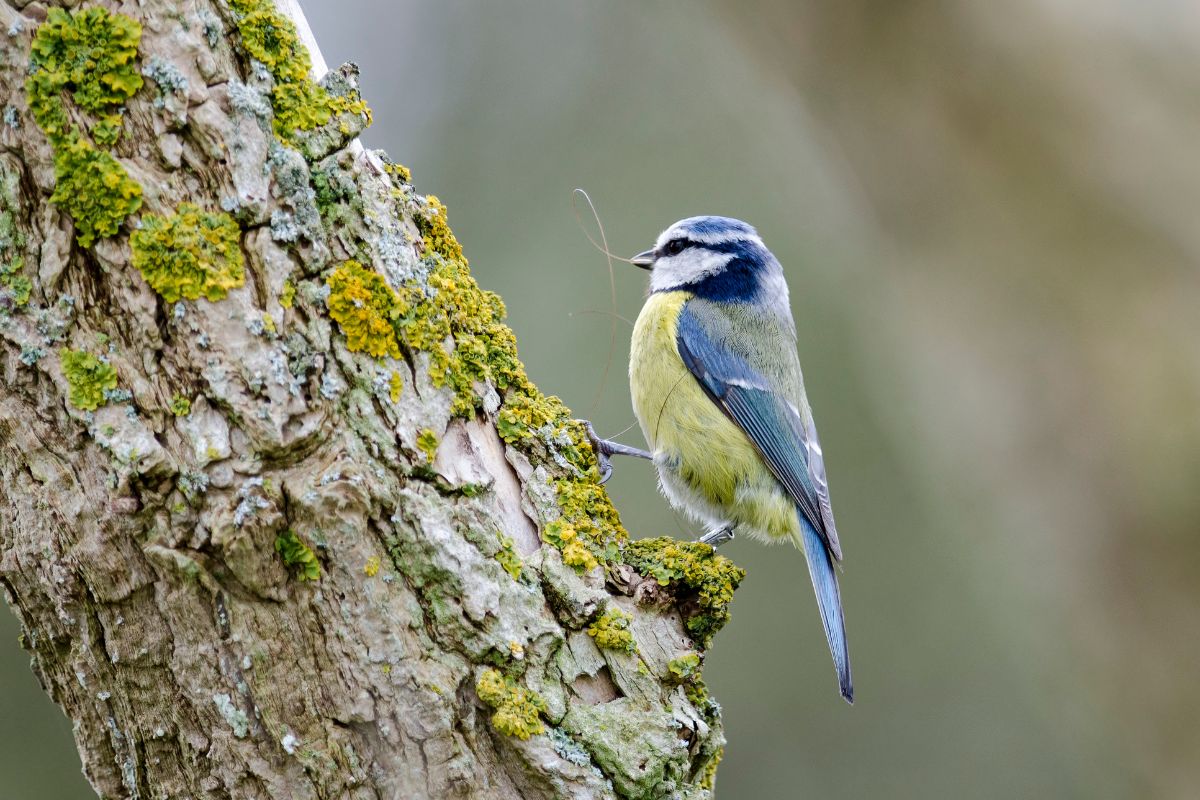
Here are some of the most commonly asked questions about Blue Tit nesting.
How long does it take a blue tit to make a nest?
Blue Titis usually take one or two weeks to build a nest, though they can create it much faster if necessary, such as if it is late in the season.
How do I know if Blue Tits are nesting?
The best way to tell if Blue Tits are nesting in your birdhouse is to observe and monitor the area closely. Blue tits will come and go to gather supplies for their nests or food for their young. If you can identify Blue Tits repeatedly entering and exiting a small crevice or birdhouse, they are likely nesting within.
Is it okay to look in a bird box?
It is okay to look in a bird box, though you should avoid doing it more than necessary. If you live in the UK, the British Trust for Ornithology has methods for looking into your birdbox and making observations.
Whether your birdbox is hosting Blue Tits or other birds, it is helpful for researchers to have as much data as possible, so always enter your information into the form if you can.
